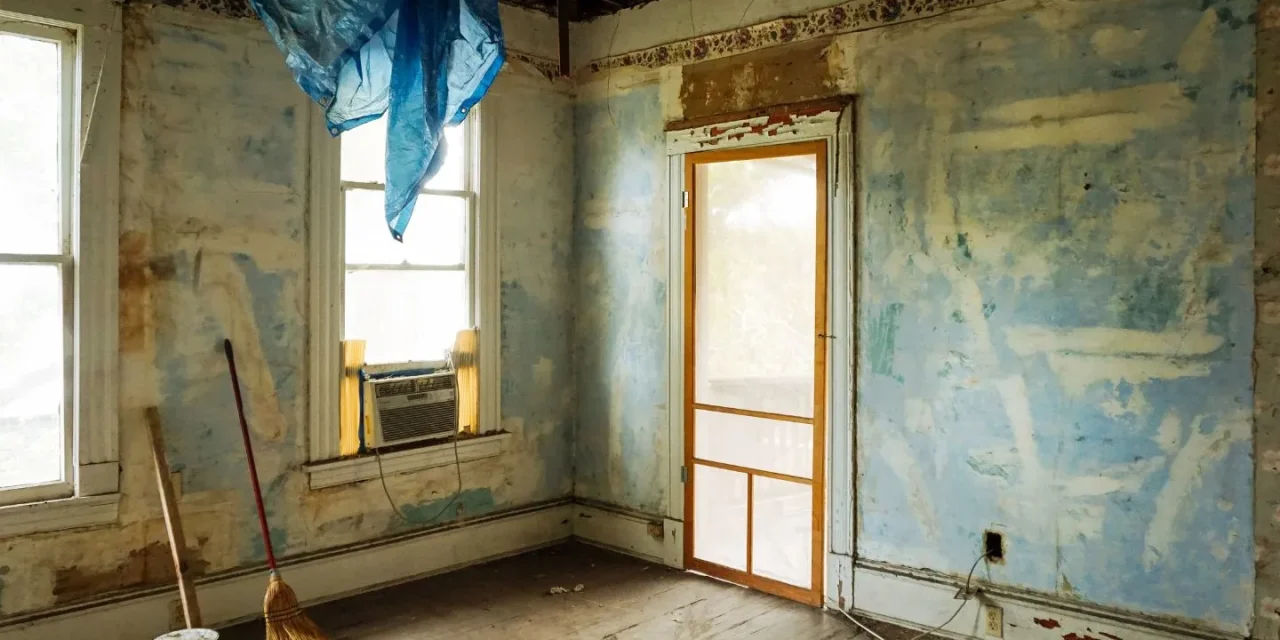Transforming your house into a dream home is an exciting prospect. Whether it’s a brand new deck for summer barbecues or a fresh coat of paint to revamp your living space, renovations can breathe new life into your property. However, those who’ve been glued to HGTV reruns know that these projects don’t always go swimmingly.
Being prepared for potential roadblocks is key to navigating the renovation journey successfully. Here, we’ll delve into the top six home renovation mistakes homeowners commonly face, along with valuable tips to steer clear of them and ensure your home improvement dreams become a reality.
Budget Blues: The Bane of Renovations
One of the biggest blunders new homeowners make is failing to establish a realistic budget for their renovations. Home improvements, big or small, can quickly devour your wallet. Remember, when tackling one project, you might uncover a hidden gremlin requiring attention – a leaky faucet behind the wall, for instance. A well-defined budget empowers you to prioritize projects and assess if those surprise discoveries can fit within your financial means.
Canadians and Renovations: Numbers Don’t Lie
For Canadians, keeping an eye on the numbers is crucial. On average, Ontario homeowners shell out an estimated $13,603 annually on renovations. Whether you spend half that amount or triple it, understanding the project’s scope, factoring in inflation, and researching material costs beforehand are all essential elements of crafting a solid budget. Sometimes, strategically delaying certain renovations to prioritize others might be the wiser course of action.
Taming the Budget Beast: How to Prevail
The best defense against overspending is a meticulously planned renovation budget. Here’s a battle plan to conquer budget woes:
- Prioritize Your Projects: Create a list of desired renovations, ranking them by importance.
- Research is Key: Once you’ve identified your top priorities, delve into research to understand the average costs associated with each project.
- Embrace Realistic Numbers: Be honest about the financial resources at your disposal. Factor in a buffer for unexpected expenses – it’s always better to be safe than sorry.
- DIY or Hire a Pro? Be realistic about your own skills and factor in the potential costs of unforeseen issues or additional supplies if tackling a DIY project. When hiring a contractor, obtain quotes from several qualified professionals to get a clear picture of pricing. Pro Tip: When budgeting, err on the side of caution and allocate extra funds for potential surprises.
The Allure of the Cheapest Contractor: A Siren Song to Avoid
Speaking of contractors, another common misstep is simply hiring the first or the most affordable one you come across. While staying within budget is important, remember that the quality of work often reflects the price tag. A contractor offering a rock-bottom price might lack experience or use subpar materials to cut corners. A poorly executed renovation can snowball into a future headache (and expense).
Finding the Renovation Right Hand: Your Guide to Contractor Selection
So, how do you identify an affordable yet reliable contractor? Here are some key strategies:
- Seek Multiple Quotes: Don’t settle for the first offer. Obtain quotes from at least three different contractors for each project.
- The Power of Questions: Interview each contractor with a prepared list of questions. Here are some examples:
- Are they licensed, bonded, and insured?
- How long have they been in the business?
- Do they have experience with similar projects?
- Can they provide references to check their work quality?
- A Detailed Estimate is Your Friend: A qualified contractor’s estimate should include a breakdown of project details, permit costs, insurance, overall fees, and a warranty on the work performed. If the estimate lacks these specifics, it might be a sign that the contractor is either guessing at the final cost or simply not experienced enough to provide a comprehensive quote.
The Trendy Trap: When Style over Substance Backfires
In the age of social media, it’s easy to fall prey to the allure of fleeting design trends. While replicating the latest Pinterest-worthy kitchen backsplash might be tempting, resist the urge! Trends come and go, but your kitchen cabinets are a permanent fixture. A trendy kitchen remodel might impress your Instagram followers today, but it could deter potential buyers down the line when the trend fades.
Timeless Appeal: The Key to Long-lasting Style
Here’s how to avoid the trendy trap and create a space that reflects your personality while maintaining long-lasting appeal:
- Focus on the Foundation: Maintain a timeless quality in the core elements of your home. Opt for neutral paint colors, classic tile patterns, and high-quality fixtures that won’t go out of style quickly.
- Accessorize with Flair: Express your unique style through decorative elements like throw pillows, artwork, rugs, and accent furniture. These are all relatively inexpensive and can be easily swapped out as trends evolve.
Cutting Corners with Cheap Supplies: A Recipe for Disaster
In the realm of DIY projects, skimping on supplies is a frequent misstep. Sure, that brand-new showerhead might look fantastic initially, but if the low-quality materials cause the unit to leak or malfunction after a few months, your initial savings vanish. The same goes for DIY built-in bookshelves – if the cheap materials can’t support the weight of your book collection, you’ll end up with a sagging mess and potentially damaged walls. When it comes to outdoor renovations, using cheap materials can also lead to problems with your HOA (Home Owner Association) if they don’t meet quality standards.
Invest Wisely: Building a Strong Foundation for Success
The best defense against cheap materials is to prioritize quality from the get-go. Refer back to your budget planning phase and allocate sufficient funds for materials. If your budget is tight, prioritize where you spend your money. For example, you might choose to save on cabinet hardware or a backsplash and invest in high-quality cabinets and countertops that form the core of your kitchen remodel.
Pro Tip: Be realistic about your time commitment and skillset when considering DIY projects. Sometimes, hiring a professional might be more cost-effective in the long run, especially for projects that impact the structural integrity of your home.
Measure Twice, Renovate Once: The Golden Rule of Renovations
This cardinal rule might seem like a no-brainer, but it’s surprisingly easy to overlook in the excitement of a renovation project. Imagine purchasing expensive new appliances only to discover they don’t fit the designated space due to a measuring error. This scenario can be both time-consuming and costly.
Precision is Key: Avoiding Measurement Mishaps
Here’s how to ensure measuring mistakes don’t derail your renovation dreams:
- Measure Me Twice, Measure Me Thrice: This might sound excessive, but it’s a foolproof way to avoid costly errors. Double (or even triple) check all your measurements before purchasing materials or starting any major construction work.
- Enlist a Helper: Grab a friend, family member, or roommate to act as your second pair of eyes and double-check your measurements.
- Plan for the Unexpected: Always factor in a buffer zone for potential variations during the measuring process. A little extra wiggle room can prevent major headaches down the line.
The DIY Dilemma: Knowing When to Call in the Professionals
The internet is overflowing with DIY tutorials and home improvement hacks, but don’t fall into the trap of trying to tackle everything yourself. While a 20-minute YouTube video might make replacing a faucet seem like a breeze, unexpected plumbing issues can quickly arise, leaving you in over your head. DIY projects are suitable for minor repairs or aesthetic enhancements. However, when it comes to renovations that impact the structural integrity or functionality of your home, it’s best to trust a qualified professional.
When to Hire a Pro: Taking the Smart Route
During the initial planning stages, categorize your renovation projects. Identify smaller tasks you can comfortably handle yourself, and designate more complex projects that require a professional touch. Here’s a general guideline:
- DIY-Friendly Projects: These might include updating cabinet hardware, painting walls, installing a new light fixture, or building simple furniture pieces.
- Leave it to the Pros: Projects that involve electrical work, plumbing alterations, structural modifications, major appliance installation, or roof repairs are best left to licensed and insured professionals.
Conclusion: A Well-Renovated Castle Awaits
By familiarizing yourself with these common renovation pitfalls and following the valuable tips provided, you can navigate the renovation journey with confidence. Remember, a well-defined budget, meticulous planning, and a focus on quality will pave the way for a successful home improvement experience. With the right approach, you can transform your house into a dream home that reflects your style and provides lasting enjoyment for years to come.











